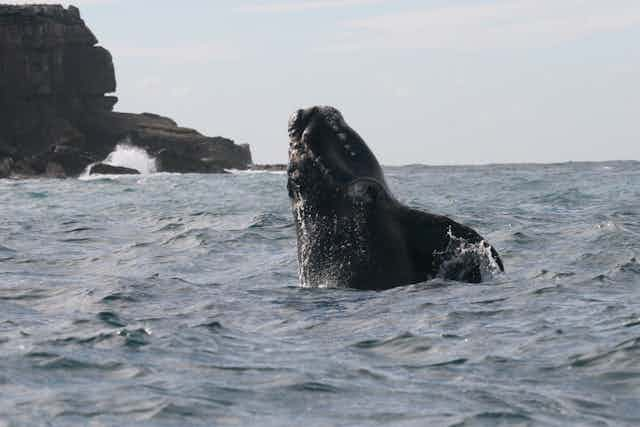Every July southern right whales arrive in the sheltered inlets of southern Australia to breed. These endangered whales were severely depleted by whaling, with up to 150,000 killed between 1790 and 1980.
After more than a century of protection they are recovering well in parts of their range. Off south west Australia their numbers are increasing at nearly 7% each year. The population found in the New Zealand sub-Antarctic is also looking robust. But the population found in south east Australia and mainland New Zealand does not seem to be faring so well.
In a study published today in Nature Scientific Reports we looked at the migration routes of these whales, which may help explain why they have been so slow to recover.
Where do the whales go?
Southern right whales migrate between their breeding grounds off the coast of Australia and New Zealand and feeding grounds in the Southern Ocean.
For a long time we have suspected that these whales show fidelity to their breeding grounds, as individuals return each year to popular tourist sites such as The Head of the Bight in South Australia and to Warrnambool in Victoria. But where exactly they feed has remained a mystery.
For more than 20 years we have studied these whales using small skin biopsies. We looked at genetic evidence and analysis of stable isotopes of carbon and nitrogen. Carbon isotopes provide an indication of where animals are feeding. Combined with genetic evidence, this provides clear insights into who is feeding where, and in part with whom.
We found evidence of genetic structure at both ends of the migratory network of southern right whales. That is animals showed high fidelity and bred within the same populations returning to familiar calving sites in Australia and New Zealand over many years. These animals also showed distinct separation when feeding in the southern ocean.
This suggests that whales that follow different migration routes belong to different subsets of the population, because if whales were moving between routes we would see more genetic mixing.
Migratory culture
Our data suggest that these whales pass on their migration routes culturally - particularly from mothers to their daughters.
Fidelity to migratory routes is widespread in the animal kingdom, from eels and the Sargasso Sea, through Pacific Salmon returning to spawn in only a single river catchment, the great migrations of the African savanna, to the annual migrations of the great whales.
In the marine environment returning to the place of your birth can have an enormous influence on population structure, and is important for assessing stocks of commercial species such as Pacific Salmon, as well as in conserving endangered species.
For long-lived animals, passing on knowledge of migration routes may be more successful than leaving offspring to fend for themselves. If behaviour is socially transmitted and then shared within subsets of a population, it is called culture.
Therefore, in species with long periods of parental care the transmission of parental preferences for breeding or feeding grounds to offspring is termed migratory culture.
Threatened by loyalty
Migratory culture could help explain why some populations of southern right whales are recovering and others aren’t.
When animals that show fidelity to a particular migratory destination are lost, the “memory” of that migratory destination is also lost. The effect is exacerbated when animals are lost across the migratory network, as was the case with whaling. These losses due to rapid reductions in populations can mean that safe havens may remain lost to a population for generations.
Migratory traditions can be a big advantage to long-lived animals by providing young with ready access to proven feeding areas and safe breeding habitat. But in a rapidly-changing environment, such as hat we face today, previously productive feeding grounds may become less productive.
Loyalty to their migration routes might then mean these animals are pushed back to the brink of extinction.

